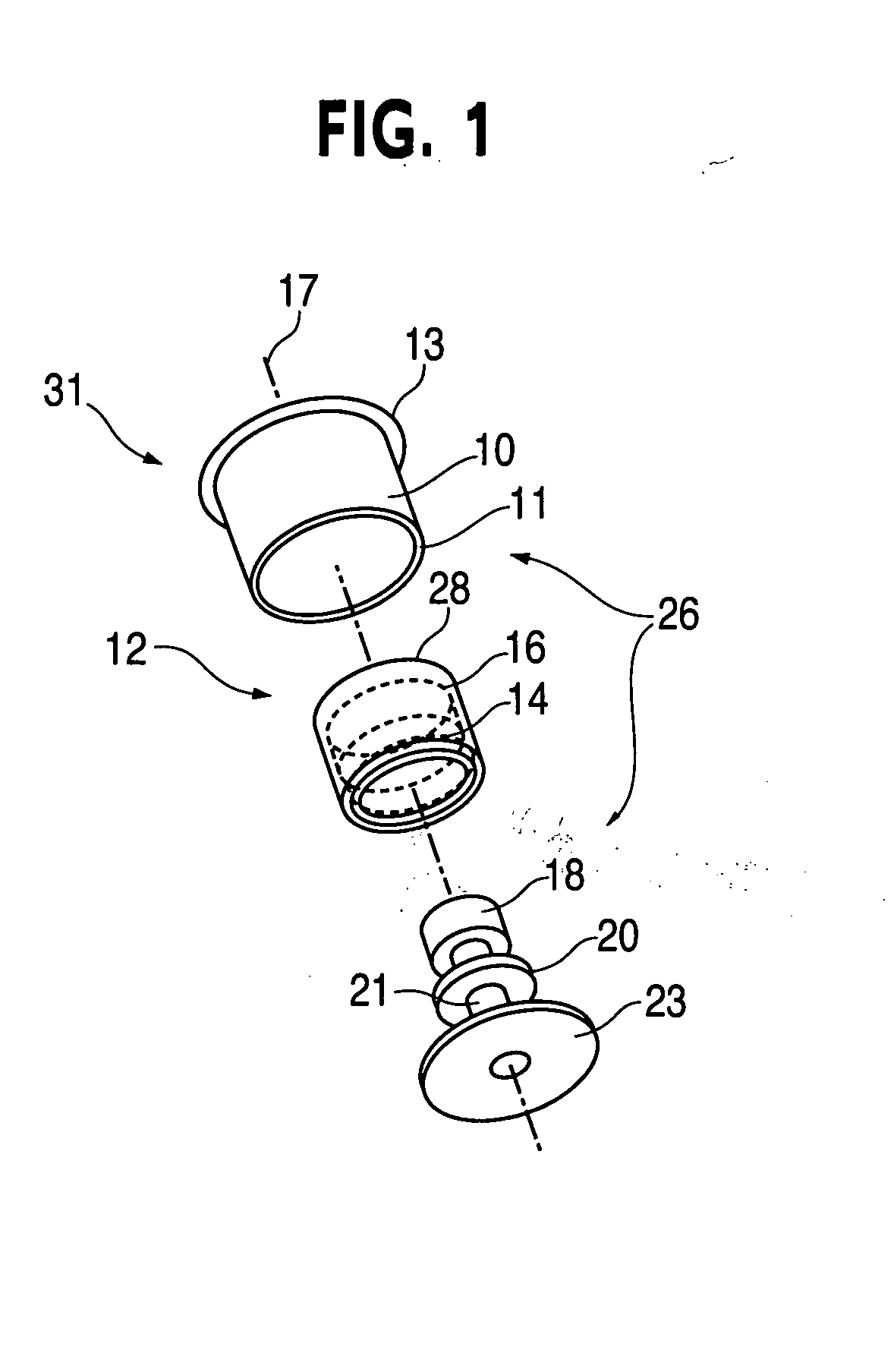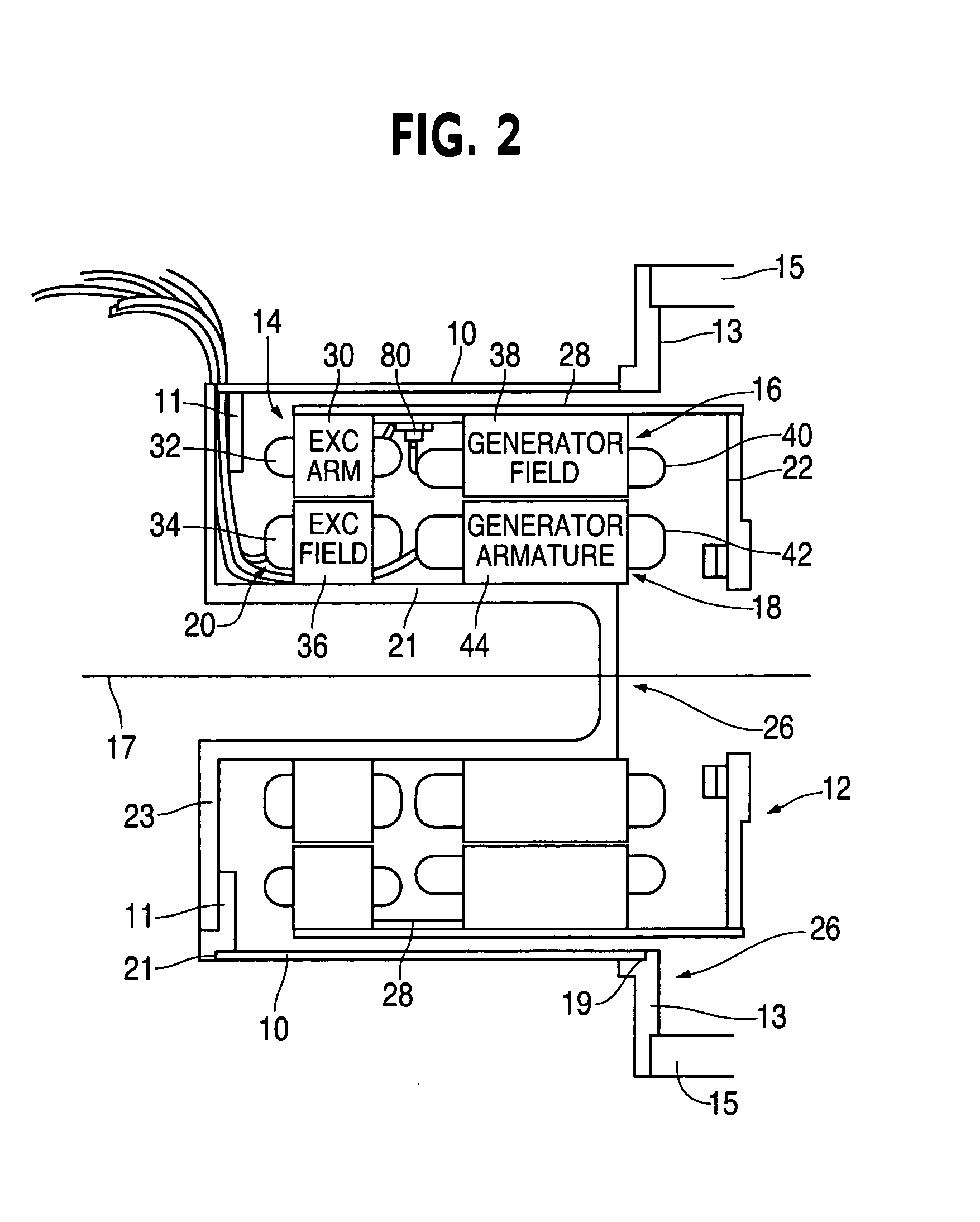Electrical machine having centrally disposed stator
- Summary
- Abstract
- Description
- Claims
- Application Information
AI Technical Summary
Benefits of technology
Problems solved by technology
Method used
Image
Examples
second embodiment
[0052] The generator field coils 40.1 in this example are machine wound on the plurality of winding members 64, after which each said winding member 64 is engaged with one of said recesses 63 of the annular core 38.1. The advantages of this second embodiment of the generator field winding 16.1 are the same as the previous embodiment above. Furthermore, the annular core 38.1 can comprise either solid core technology or laminations.
[0053] In another embodiment of the present invention illustrated in FIG. 8, wherein like parts have like reference numerals with the extension “0.2”, an electrical generator 31.2 is connected to a flywheel 90 and an engine block 92. The electrical generator 31.2 is similar to the electrical generator 31 of the prior embodiment. The flywheel 90 is a rotatable member for rotating the rotor. The engine block 92 is a stationary member for mounting the stator.
[0054] Another advantage of the present invention is the ability to quickly mount the electrical gener...
first embodiment
[0056] Another embodiment of the present invention is illustrated in FIGS. 9-14, wherein like parts have like reference numerals with the extension “0.3”. This embodiment is similar to the Referring first to FIGS. 9-11, there is shown a rotor 12.3 including an exciter armature winding 14.3, a generator field winding 16.3 and a rotor housing 28.3. A rectifier assembly 98 is connected to an end of the rotor 12.3. In this example, the rectifier assembly 98 includes two bridge rectifiers and a termination assembly mounted on a printed circuit board (PCB). The bridge rectifiers are located 120 degrees apart along an outer periphery of the PCB, the termination assembly is mounted equidistant from the two bridge rectifiers along the same periphery.
[0057] Now referring to FIGS. 12-14, there is shown a stator 26.3. The stator 26.3 includes a central member 21.3, an end member 23.3, an exciter field winding 20.3 and a generator armature winding 18.3.
PUM
 Login to View More
Login to View More Abstract
Description
Claims
Application Information
 Login to View More
Login to View More - R&D
- Intellectual Property
- Life Sciences
- Materials
- Tech Scout
- Unparalleled Data Quality
- Higher Quality Content
- 60% Fewer Hallucinations
Browse by: Latest US Patents, China's latest patents, Technical Efficacy Thesaurus, Application Domain, Technology Topic, Popular Technical Reports.
© 2025 PatSnap. All rights reserved.Legal|Privacy policy|Modern Slavery Act Transparency Statement|Sitemap|About US| Contact US: help@patsnap.com



